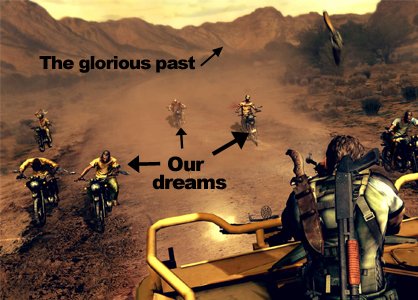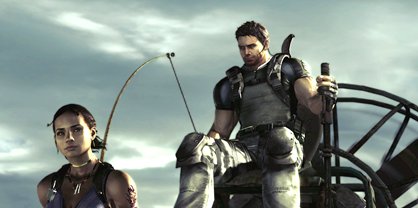The Top 7... sequels that improved nothing
Years of development, stacks of new tech, millions of dollars, no discernable improvement
Attempted improvements: The addition of co-op, a new Gears of War-style twin-stick control scheme.
But it’s still on this list because: Resident Evil 5 was the messiest case of marketing-driven identity crisis since Madonna. Resident Evil 4 was always going to be impossible to follow. It was amazing because it shook up its franchise completely and changed the mechanics of survival horror and third-person shooters forever. It changed everything, and it’s fundamentally impossible to improve upon a ground-breaking work by repeating it. That’s the nature of something that’s ground-breaking.

So after Resi 4 had slapped its massive, over-achievingknob down on the table, all Resi 5 could ever hope to do was investigate out those unsolicited penis enlargement e-mails and hope to measure up. So the gameplay remained exactly the same, but we got got slight pube-trimmings in the shape of better graphics (obviously), a new setting, new control options, and co-op.
Only that last addition really changed anything, and arguably it wasn’t for the better. With a friend hollering down the mic, Resi 4’s dense atmosphere and immaculate pacing were unceremoniously curb-stomped, and in single-player mode, dealing with combat-useless, ammo-stealing AI partner Sheva was like babysitting a toddler who’d repeatedly loot your wallet and spend the money on hamster food. And didn’t even own a hamster.

Above: Little did Sheva know, Chris was about to kick her right off the boat, and then run her over. For being a massive idiot. Heeeeere, crocky crocky!
And worst of all? The total lack of imagination or design falir. With Resi 4 director Shinji Mikami departed for Platinum Games, Resi 5 brought barely even a single new enemy to the table, rehashing and recycling – even when logistically illogical - where its predecessor had shocked and amazed us at every turn. Bag-headed chainsaw men were back, and El Gigante was suddenly in Africa for some reason too. Except where once he was awesome, now he was rubbish.
2. Marvel: Ultimate Alliance 2
Attempted improvements: More well-known characters, two-character special attacks
Weekly digests, tales from the communities you love, and more
But it’s still on this list because: Nothing else changed. And as Henry pointed out inhis M:UA2 review, the gameplay model for this series has been around since 2004’s X-Men Legends. Is some meaningful improvement to a basic dungeon crawler too much to ask, given a five-year window of potential improvements? Yes. Yes it seems it is. What cheeky scamps we are for even suggesting it.

So yeah, we got a more recognisable cast list, but aside from fan-service, the game’s improvements were on a par with adding extra cheese to a triple-cheese pizza with a base already made of nothing but cheese. We walked, ran and flew along. We encountered bad people who wanted to hurt us. We hurt them ‘til they didn’t want to hurt us any more. We pulled out the X-hose, we super-rinsed, and we super-repeated.
The new twin-character combo attacks were a nice touch. And it’s almost plausible that coming up with a unique one for each combination of the game’s multitude characters took so long that there wasn’t time to do anything else. It hurts our heads to even try to work out how many there needed to be. But the fact is that once each super-combo super-load was blown, it was straight back to the same old mash and grind we’d been crunching through for half a decade. Super-snore.



